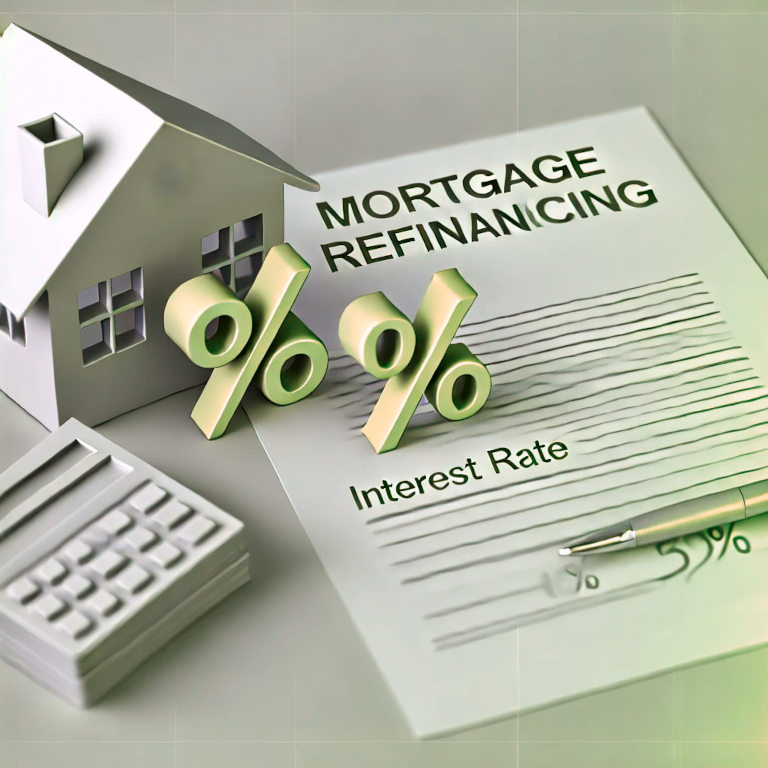Mortgage refinancing is a financial strategy that can help homeowners save money, reduce monthly payments, or access the equity in their homes. As an expert in Personal Finance, I will explain the ins and outs of mortgage refinancing, its benefits, potential drawbacks, and how to determine if it’s the right move for you. This article will provide valuable insights into mortgage refinancing to help you make informed financial decisions.
What is Mortgage Refinancing?
Mortgage refinancing involves replacing your current mortgage with a new one, typically with different terms. Homeowners refinance their mortgages for various reasons, such as obtaining a lower interest rate, changing the loan term, or accessing home equity.
Benefits of Mortgage Refinancing
There are several advantages to refinancing your mortgage. Here are some key benefits:
Lower Interest Rates
One of the primary reasons homeowners refinance is to secure a lower interest rate. A reduced rate can significantly decrease your monthly mortgage payments and save you thousands of dollars in interest over the life of the loan.
Reduced Monthly Payments
By refinancing to a lower interest rate or extending the loan term, you can reduce your monthly mortgage payments. This can free up cash for other expenses or financial goals.
Shorter Loan Term
Refinancing to a shorter loan term, such as from a 30-year to a 15-year mortgage, can help you pay off your home faster. While this may increase your monthly payments, it will save you money on interest in the long run.
Accessing Home Equity
Cash-out refinancing allows you to borrow against the equity in your home. This can provide funds for home improvements, debt consolidation, or other financial needs. However, it’s essential to use this option wisely to avoid increasing your debt burden.
Switching Loan Types
Homeowners may refinance to switch from an adjustable-rate mortgage (ARM) to a fixed-rate mortgage for more predictable monthly payments. Alternatively, you might refinance from a government-backed loan to a conventional loan to eliminate mortgage insurance premiums.
Potential Drawbacks of Mortgage Refinancing
While refinancing can offer significant benefits, there are also potential drawbacks to consider:
Closing Costs
Refinancing involves closing costs, which can range from 2% to 5% of the loan amount. These costs include appraisal fees, origination fees, and title insurance. It’s important to calculate whether the long-term savings outweigh the upfront costs.
Extended Loan Term
Refinancing to a longer loan term can reduce your monthly payments but may increase the total interest paid over the life of the loan. Carefully consider the trade-offs before extending your loan term.
Impact on Credit Score
Applying for a new mortgage involves a credit check, which can temporarily lower your credit score. Additionally, opening a new loan can affect your credit history. Ensure your credit is in good standing before refinancing.
Steps to Refinance Your Mortgage
If you decide that refinancing is right for you, follow these steps to ensure a smooth process:
1. Assess Your Financial Situation
Review your current mortgage terms, interest rate, and remaining balance. Determine your financial goals, such as lowering your monthly payments, shortening your loan term, or accessing home equity.
2. Check Your Credit Score
A higher credit score can help you secure a better interest rate. Obtain a copy of your credit report and check for any errors. Take steps to improve your credit score if necessary.
3. Shop Around for Lenders
Compare offers from multiple lenders to find the best terms and interest rates. Consider both traditional banks and online lenders. Don’t be afraid to negotiate to get the best deal.
4. Gather Necessary Documentation
Prepare the necessary documentation, including proof of income, tax returns, bank statements, and information about your current mortgage. Having these documents ready can expedite the refinancing process.
5. Apply for the Loan
Submit your application to the chosen lender. Be prepared to answer questions and provide additional information as needed. The lender will conduct an appraisal of your home to determine its current value.
6. Review the Loan Estimate
After applying, you will receive a Loan Estimate, which outlines the terms, interest rate, monthly payment, and closing costs. Review this document carefully and ensure you understand all the terms.
7. Close the Loan
If you agree to the terms, proceed to the closing process. Review the Closing Disclosure, which provides final details about the loan. Pay the closing costs and sign the necessary documents to finalize the refinance.
When to Consider Refinancing
Refinancing isn’t always the best option for everyone. Here are some scenarios when refinancing may be beneficial:
- Interest Rates Have Dropped: If current mortgage rates are significantly lower than your existing rate, refinancing could save you money.
- Improved Credit Score: If your credit score has improved since you obtained your original mortgage, you may qualify for a better rate.
- Financial Stability: If your financial situation has stabilized, and you have sufficient equity in your home, refinancing could help you achieve your financial goals.
- Long-Term Homeownership: If you plan to stay in your home for several more years, refinancing could provide long-term savings.
Summary
Mortgage refinancing can be a powerful tool for homeowners looking to save money, reduce monthly payments, or access home equity. By understanding the benefits, potential drawbacks, and steps involved, you can make an informed decision that aligns with your financial goals. Whether you aim to lower your interest rate, shorten your loan term, or switch loan types, refinancing offers a range of options to improve your financial situation. Assess your current mortgage, compare offers from multiple lenders, and carefully review the terms to ensure a successful refinancing process.






